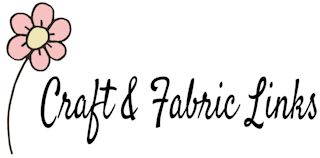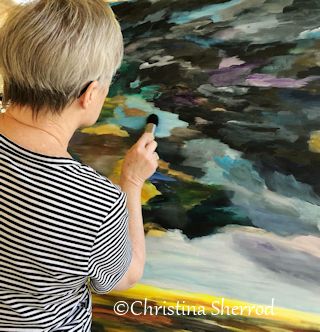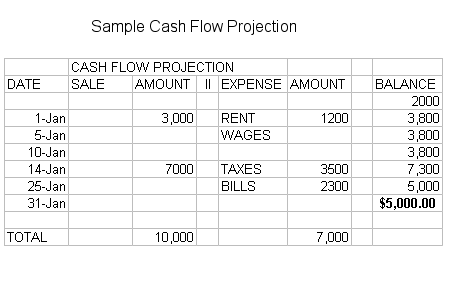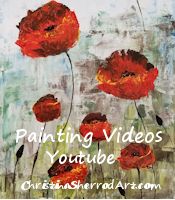|
|
| HOME SEW CRAFTS SHOP |
|
BUSINESS BOOK
Create Your Way To Success |
| lessons craft patterns sewing patterns |
Chapter 6: page 2 of 3
|
|
Index & Table of Contents
Please read our Disclaimer and Terms Of Use before reading this book. |
|
Page 1: Business Plan
|
Why Do I Need A Business Plan?Before proceeding, careful planning is needed to ensure business success. Special "business tools" reduce risk and increase chance of success if used properly. Each tool covered in this chapter plays a big part in the success of your business, so don't leave any of them out. These tools include Cash Flow Analysis, a Business Plan, Budgets, Business Volume Projection and Time Management (calendars, time lines, etc.). SPREADSHEETS: BUDGET, CASH FLOW, WHAT IF There are three types of spreadsheets that are a business owner's best friends. They help in planning the future of a business. Proper planning can stop a disaster before it occurs. The three types of spreadsheets are cash flow, budget and "what if". They can be done manually on large 12 column accounting tablets or on a computer. Excel is an excellent program for this purpose. Use these spreadsheets for planning the startup of the business, and continue to use them during the life of the business to determine the results of your business decisions. All three are based on various criteria that are established at the time the spreadsheet is created. Cash Flow Use this spreadsheet to determine cash flow for the planned scenario. A cash flow spreadsheet extends over several months - either on one sheet or with months on separate sheets. The beginning balance of any month is automatically set to equal the ending balance of the preceding month. Balances throughout the month are automatically calculated as cash is added or subtracted. If this is January, you can go to March and add expenses of higher rent and watch the balances change for the rest of the year. Will you have enough cash for the remainder of the year to handle the higher rent? Is there a month where you might run into trouble? Let's say you are planning your usual business operations for the next three months and want to see if there will be any sort of cash flow problem. On any given date on the spreadsheet, the time period up to that date is "actual", meaning it is a copy of what is actually recorded in your checkbook. I updated cash flow worksheets for my clients weekly and the balance on the date of the last update is equal to the balance actually recorded in the checking account. All information after that date was based on my estimates. I input all expected cash intake and expenditures. I usually projected out several months, although you must keep in mind that the further out you go, the less accurate your projection becomes. This worksheet is very helpful in planning purposes because you can input your expected cash expenditures and see if they make sense. If you see a negative checking balance developing anywhere, you know you will need a loan or you will need to make adjustments, either in expenditures or in the date of the expenditures. Below is an example of a cash flow spreadsheet. Incoming cash is listed on the left; expenditures are on the right.
In the above example, I am predicting the cash intake for the month to be $10,000. That number is based on past sales (which helps me estimate cash sales this month), other money I expect to collect this month, etc. You will get more accurate with this part over time. NOTE: This is not the amount of sales for the month, but the amount you expect to collect in the month. This is why this spreadsheet is so important. It does not tell you whether your company is making a profit; instead it tells you if you will have adequate funds. A company can be making a profit, but still run out of money - a very hard lesson to learn! Budget Computer spreadsheet programs are also excellent for creating budgets. A budget is an important planning tool mostly because it makes you think hard about your future. You must think about the direction of the business and you can learn a lot simply by doing this excercise. You do not have to be frozen to the budget. A budget is usually made up for an entire year at a time, but if partway through the year there is a big change in the business (hopefully a positive one!), you can create an amended budget. It is merely a tool for you to use to see if you are "on track" based on your initial plans for the year. There are several tricks to creating a good budget. Your first year's budget will be a real guess based on projected sales and expenses. After the initial year, however, a more accurate budget can be developed. It is best to start with a sales forecast. This should be based on actual facts on the business. How did the business perform last year? What was the percentage of growth the first year in business? What is the expected rate of growth in the new budget year? Why? Once you have the new sales figures, you can predict direct costs. These are costs directly assiciated with sales. Direct costs grow in a direct proportion to sales. If it costs $5.00 to make one tree ornament and you sell it for $12.00, the $5.00 cost per ornament is a direct cost. Doubling your sales will double your direct costs. You can assume that $1,200 in sales (100 ornaments) will have a cost of $500. What if you make 100 ornaments but only sell 50? The 50 you do not sell are actually in your inventory, so their cost is not yet recorded. Think about it. You have 50 ornaments in your garage ready for sale. They are an asset (that's a good thing). They are worth something to you. Your profit statement would show sales of $600 (50 ornaments at $12.00 each) and your expense would be $250 (50 ornaments at $5.00 each). Your balance sheet (lists your company's debts and assets) would show inventory worth $250 (50 ornaments in your garage at a cost of $5.00 each). More on this in Chapter 7. Next you must predict fixed costs. These generally do not grow as a proportion of sales in the short run. These are things like rent. It does not matter how many ornaments you make, your rent remains the same. Of course, no cost is a fixed cost in the real long run. For example, rent actually becomes semi-fixed in the longer run because after a certain amount of growth, your overhead costs like rent will increase (if your demand for ornaments jumps from 100 per month to 10,000 per month you will need a larger place). Once you have your budget completed, compare the figures to last year. What was the cost per dollar of revenue for each expense last year? Is it the same this year? Why not? Is each expense the same percentage of total expense as it was last year? Why not? You need to pinpoint details of costs of doing business. Is it getting more expensive to do business? In what areas and why?
What If Statement This can be an income statement (or budget) or cash flow statement. Plug in various figures representing various business scenarios. Suppose you are a seamstress and you are considering adding a new embroidery service. You need to know whether it would be profitable, and you need to know what the cash flow change would be. You would need to make a new estimated income statement (budget) and a new estimated cash flow statement. Don't replace your regular budget and cash flow projection; this is just something to view as a tool. You can make any number of changes and watch the results. Start with your original spreadsheets, and "save as" a new name (so you don't overwrite your real statement). For example, you might call it "Embroidery Cash flow". |
|
Page 1: Business Plan
|
| Index & Table of Contents Chapter 1 Chapter 2 Chapter 3 Chapter 4 Chapter 5 Chapter 6 Chapter 7 Chapter 8 Resource Links |
Visit our store! |
Free Videos |
Please ShareI rely on advertising to keep my site free. Please share with friends. |
Privacy Policy & Terms Of UseBy using our website, you expressly consent to our Privacy Policy and Terms & Conditions. All Patterns, images and instructions are copyright protected. |





